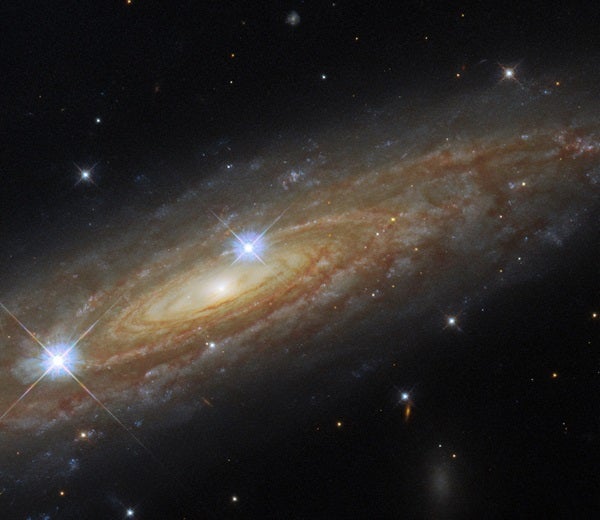Located some 230 million light-years away in the constellation Aquila the Eagle is the majestic galaxy UGC 11537. Because this distant, tightly wound spiral appears so near the plane of our own Milky Way, two foreground stars are prominently photobombing UGC 11537 in this Hubble Space Telescope image. Each of these foreground stars displays a strong starburst effect, which is an optical artifact that results from starlight hitting Hubble’s secondary mirror, producing so-called diffraction spikes.
Three examples of image artifacts appearing in NASA images. LEFT: Venus appears like a butterfly of light in this STEREO coronagraph image due to the way the instrument bent its incoming light. MIDDLE: Venus is again affected by an artifact, this time appearing to streak to the sides caused by an excess signal. RIGHT: NASA’s STEREO coronagraph caught this image of a highly energetic particle passing through the instrument.
But starbursts aren’t the only example of imaging artifacts caused by the sometimes strange acrobatics of light in astrophotographs. Light is often bent (left), both by the gravity of massive objects it passes and by instruments it passes through. If an object is too bright for the sensitive detectors on an instrument, that object can also appear to bleed, or streak, out to either side (middle). And sometimes energetic particles leave traces of their paths themselves in photographs (right), producing thin bands of light.
Thankfully, these image artifacts aren’t as pesky as they seem, and instead are seen by most astronomers as a small price to pay for such great images.











